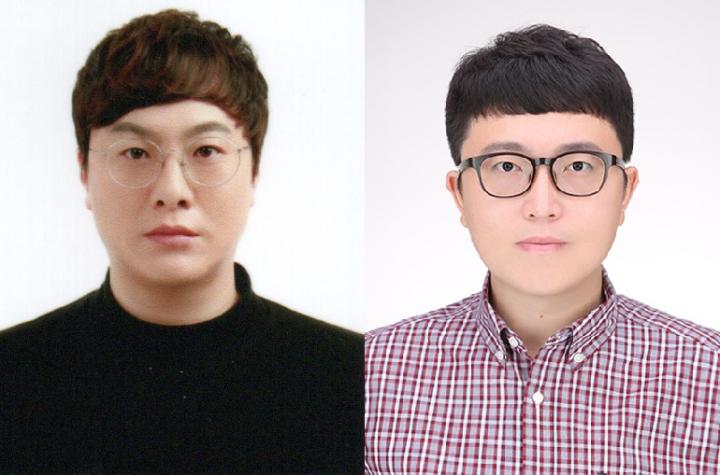Scientists demonstrate the relationship between optoelectronic performance and size uniformity in perovskite colloidal quantum dots
Quantum dots (QDs) are semiconductor particles only a few nanometers across that, thanks to their small size, exhibit peculiar optical and electronic properties due to quantum mechanics. With existing and foreseen applications in screens, lighting, lasers, and energy harvesting, research in quantum dots has been steadily progressing. In particular, colloidal QDs (CQDs) have been in the nanotechnology spotlight for over a decade.
CQDs are semiconductor nanocrystals that can be produced easily from solution-based processes, which make them suitable for mass production. However, for CQD-based devices to operate at their best, the quantum dots should be monodisperse–that is, they should all have the same size. If their sizes are not equal (polydisperse), the energetic disorder within the optoelectronic device increases, which in turn hinders its performance. While some strategies exist to combat polydispersity in CQDs, the problem is trickier to avoid in perovskite-based CQDs (Pe-CQDs), which require a purification step with an antisolvent. This step invariably leads to nanoparticle agglomeration, and ultimately, large variations in size between quantum dots.
Although producing well-purified monodisperse Pe-CQDs might be necessary to produce highly efficient solar cells, no one has carefully explored the relationship between polydispersity and photovoltaic (conversion) performance. To fill in this knowledge gap, Dr Younghoon Kim and Assistant Professor Jongmin Choi from Daegu Gyeongbuk Institute of Science and Technology, Korea, recently led a team of scientists in a study that published in ACS Energy Letters. The researchers used a technique called gel permeation chromatography to ‘filter’ and group nanoparticles based on their size, as confirmed by several measurements of their optical properties as well as transmission electron microscopy. With this approach, they managed to obtain suspensions of Pe-CQDs with different degrees of polydispersity.
Afterwards, they used these suspensions to fabricate solar cells and demonstrate the link between polydispersity and performance. As expected, the monodisperse suspension resulted in a better solar cell thanks to its homogeneous energy landscape, which led to higher light absorption within the optimal frequency band. “With the monodisperse Pe-CQDs, our solar cells reached a power conversion efficiency of 15.3% and an open-circuit voltage of 1.27 V. These values are the highest ever reported for Pe-CQDs based on CsPbI3, the perovskite we used,” highlights Dr Kim.
Overall, this study is a steppingstone in the field of solar cells based on Pe-CQDs, which still need to outperform their silicon-based counterparts to warrant commercialization. “Research on Pe-CQD solar cells began about four years ago, so further studies are needed to improve device performance and stability. Still, our approach for minimizing energetic disorder using monodisperse Pe-CQDs paves the way to further develop their potential in optoelectronic applications,” concludes Dr Choi. Let us hope they eventually manage to join up all the (quantum) dots!
###
Reference
Authors: Seyeong Lim1, Gyudong Lee2, Sanghun Han2, Jigeon Kim3, Sunhee Yun1, Jongchul Lim4, Yong-Jin Pu5, Min Jae Ko3, Taiho Park1,*, Jongmin Choi2,*, and Younghoon Kim6*
Title of original paper: Monodisperse Perovskite Colloidal Quantum Dots Enable High-Efficiency Photovoltaics
Journal: ACS Energy Letters
DOI: 10.1021/acsenergylett.1c00462
Affiliations: 1Department of Chemical Engineering, Pohang University of Science and Technology (POSTECH)
2Department of Energy Science and Engineering, Daegu Gyeongbuk Institute of Science and Technology (DGIST)
3Department of Chemical Engineering, Hanyang University
4Graduate School of Energy Science & Technology, Chungnam National University
5RIKEN Center for Emergent Matter Science (CEMS)
6Division of Energy Technology, Materials Research Institute, Daegu Gyeongbuk Institute of Science and Technology (DGIST)
*Corresponding authors’ emails: [email protected] (T. P.); [email protected] (J. C.); [email protected] (Y. K.)
About Daegu Gyeongbuk Institute of Science and Technology (DGIST)
Daegu Gyeongbuk Institute of Science and Technology (DGIST) is a well-known and respected research institute located in Daegu, Republic of Korea. Established in 2004 by the Korean Government, the main aim of DGIST is to promote national science and technology, as well as to boost the local economy.
With a vision of “Changing the world through convergence”, DGIST has undertaken a wide range of research in various fields of science and technology. DGIST has embraced a multidisciplinary approach to research and undertaken intensive studies in some of today’s most vital fields. DGIST also has state-of-the-art-infrastructure to enable cutting-edge research in materials science, robotics, cognitive sciences, and communication engineering.
Website: https:/
About the authors
Younghoon Kim received his Ph.D. degree from the Department of Chemical and Biological Engineering in Korea University in 2014. He worked as a postdoctoral researcher at the Department of Chemical and Biological Engineering in Korea University (2014-2015) and at the Department of Electrical and Computer Engineering in the University of Toronto, Canada (2015-2017). He is currently a senior researcher at the Division of Energy Technology, DGIST (2017~present).
Jongmin Choi is an Assistant Professor in the Department of Energy Science & Engineering at DGIST. He received his B.S. and Ph.D. degrees from the Department of Chemical Engineering in POSTECH in 2010 and 2016, respectively. After that, he worked as a postdoctoral researcher at the Department of Electrical and Computer Engineering in the University of Toronto, Canada (2016-2018).
Media Contact
Kwanghoon Choi
[email protected]
Original Source
https:/
Related Journal Article
http://dx.





